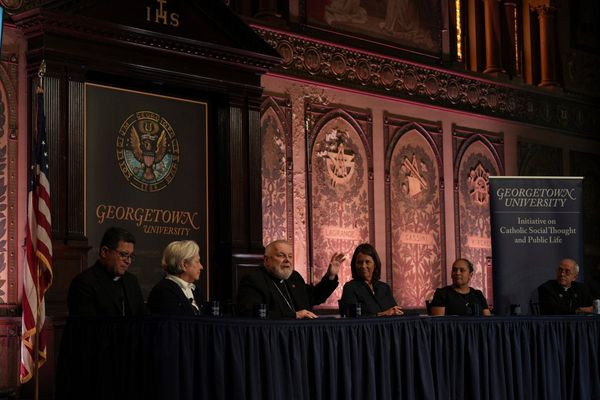
Has anyone ever had a better few days than Donald J Trump just had? It’s one thing to stage what is perhaps the greatest political comeback ever and reclaim your position as the leader of the free world. But, arguably, the inauguration might not have even been the highlight of his week if you look at his social media posts.
Since January 18th, Trump’s official X, formerly Twitter, account has posted three times to his almost 100 million followers about his inauguration on Monday. But it’s posted four times about cryptocurrency: two posts about a Trump “memecoin”, retweeting his son Eric’s post about the Trump memecoin, $TRUMP, and once about his wife Melania’s memecoin for good measure. These posts, it appears, have been enough to net him billions of dollars (on paper, at least).
Let’s break down what’s happening here. Memecoins are a type of cryptocurrency. They typically function like other cryptocurrencies — digital currency, more or less — except they’re branded after something that’s the subject of hype and they generally have no function other than wild financial speculation. Creating a memecoin is now as simple as going to a website, deciding on a name and how many coins to make, and then releasing it to the world.
For example, Dogecoin, which draws from the Doge meme, is the best-known example of a memecoin. Another recent example is a coin released by the “Hawk Tuah” girl to cash in on her becoming a sudden internet celebrity thanks to her viral onomatopoeic oral sex impression to a vox pop YouTuber. (If you need to sit down and have some paracetamol after reading the sentence, I completely understand). If you strip back the technology layer, a memecoin functions as a way to cash in on hype around something.
Now, you might be asking, how are people cashing in on this? There are two groups of people that make money from a memecoin. Firstly, there are the people who set it up. In the case of $TRUMP, two entities linked to Trump have kept 80% of the supply of the memecoin to themselves and released the rest to the market at a set price. In this case, TRUMP debuted at less than US$0.20 (A$0.32) and completely sold out and completely sold out, immediately raising US$300 million (A$478 million) for the Trump-linked companies. But the real value is in the 80% of $TRUMP reserves which, thanks to the price of $TRUMP spiking to US$75 (A$120) at one point, were valued at US$56 billion (A$89 billion) on paper (although it’s unlikely that this much could ever be cashed out at this value).
The second group who can make money is the people who buy and sell the memecoin. Because many of these coins are essentially worthless and often initially priced at a fraction of a cent, even a mild fluctuation in absolute cost (i.e. from one to two cents) can mean a significant proportionate increase in value. Because there’s such a low barrier to entry both to create and buy and there’s incredible volatility, memecoins have become vehicles for speculation on online hype — essentially social gambling. It doesn’t matter that Unicorn Fart Dust (yes that’s a real memecoin) doesn’t have any intrinsic value. The only thing that matters to a memecoin speculator is that you can get in early, buy some before others do, and then beat the rest of them to sell it.
As you can probably guess, memecoins have been an incredible innovation in grifts and scams. The people who create memecoins like $TRUMP or $MELANIA and those who buy into them are all incentivised to hype them up as much as possible, sometimes even veering into outright lies and fraud. They will all say that the price is going to the moon, that it will hold its value, that you, a potential buyer, won’t be left holding the bag. They’ll stoke FOMO (fear of missing out) and compel to HODL (hold on for dear life). They entice people to buy in because every purchase makes their existing reserves more valuable. Like $TRUMP, most memecoin creators keep a large portion of the currency for themselves or sell it to small circles for a reduced price before releasing some to the market, which serves to artificially inflate the price by restricting supply.
No matter what its creators and boosters say, the point is to make it out like bandits. The entire value of these memecoins comes from real money from people who bought them on the market. So when a schmuck buys a $TRUMP at $6.5, he’s handing Trump $6.5 in cold hard cash for something that was essentially free to make. And when an even bigger schmuck buys it at $70, the first schmuck makes off with $63.50. This even bigger schmuck buys in in the hope that he can find a mega-schmuck to sell it to down the road. (Just to add to the grift, one of the Trump-affiliated businesses behind $TRUMP takes a slice out of every transaction, too, meaning they are earning money each time a $TRUMP changes hands).
At some point, you run out of schmucks. That point was 11pm American Eastern Standard Time on the day before the inauguration, when the price peaked at US$74.71 (A$119.10). It’s now at US$43.99 (A$70.13), meaning that everyone who bought it above that price has currently lost money on paper. That’s not Trump, who has gone from calling bitcoin a scam to becoming an on-paper crypto billionaire. Nor is it his affiliated companies, or the early promoters. No, it’s the average punters who came in late. We can put a specific number on it: since the $TRUMP market peaked, more than US$7 billion has been taken out of the market. The winners, made up of those in the inner circle and those in the know, took those billions from the people who were kneecapped from the start.
It defies belief that Trump comprehends even the most basic thing about memecoins. I challenge you to imagine him using a computer. But I bet you that the economics of it makes intuitive sense to him. After all, the appeal of a memecoin is more-or-less the same as Trump as a political candidate. He is our first pump-and-dump president.
Like the memecoins pumped and dumped every single day, everybody knows that we can’t all be winners in the Trump presidency. Peeling back the bluster and hype, the only way that people can gain under Trump’s plans is if someone else loses. In fact, part of the appeal is the wicked delight of seeing a certain kind of person lose — whether it’s a rube who was stupid enough to buy in late or the child of an illegal immigrant whose citizenship might now be retracted under a new executive order.
Key to it all though is the belief — perhaps the delusion — that the Trump supporter will not be the person who loses. People vote for Trump and buy $TRUMP because they believe it will make their lives great again.
For some, this is true. If you are close enough to Trump to get in on the action, you’ve got a good chance of your life improving, whether by a windfall of cash or a state reshaped to your preferences. But the further you get away from him, and the less you resemble him, the greater chance that you’ll end up being a loser.
For many, this is enough to repel them from the man. After all, Trump won the popular vote, but with only 78 million votes out of a pool of about 260 million US adults. The enduring success of Trump’s political and cryptocurrency careers shows that this large slice of the population is more than enough to keep him going. And he’ll take every vote and cent that they’ll give.
Correction: This article erroneously stated the $TRUMP launch price. This has been amended.
Have something to say about this article? Write to us at letters@crikey.com.au. Please include your full name to be considered for publication in Crikey’s Your Say. We reserve the right to edit for length and clarity.









